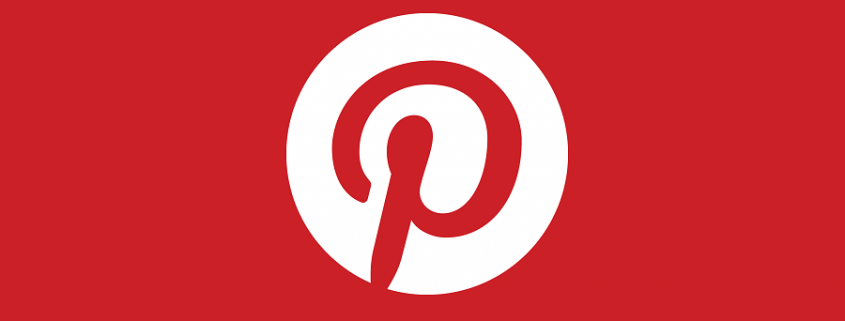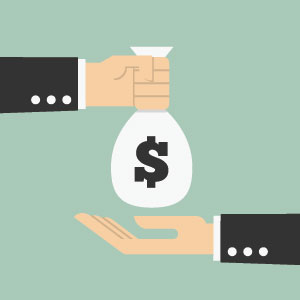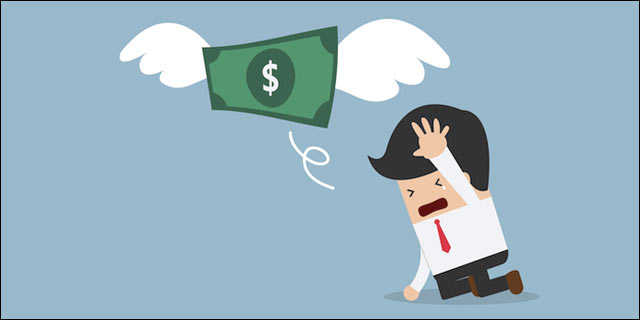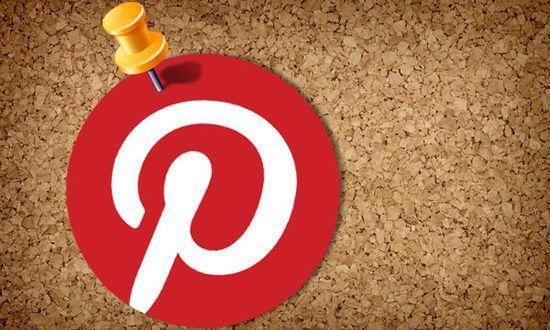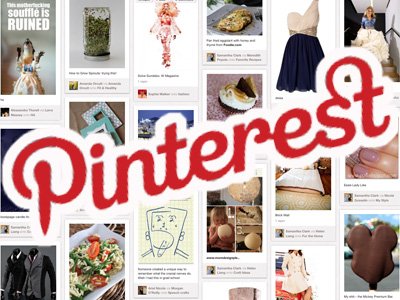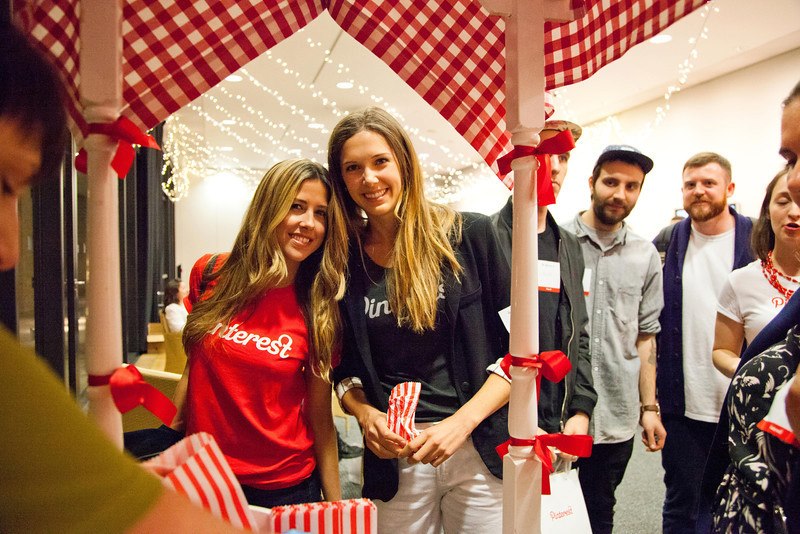Growth Hack: How Pinterest Soared to a $3.8B Valuation Before Making A Cent
I hear conflicting advice all the time about what targets are most important for early stage app startups to hit.
On the one hand, you have people screaming that cash flow and profit margins will be most attractive to investors.
On the other, you have people saying you should focus on building up a database of loyal, engaged app users and then rolling out a monetisation model only once you have proven traction.
It can be very confusing…
The latter is the path taken by online pinboard Pinterest (don’t you dare call them a social network, they hate that), the poster child for delaying their revenue model.
In 2015, Pinterest is now actually producing revenue.
But for the first 4 years of their existence, they didn’t make a cent.
And yet, investors couldn’t get enough of them.
They poured millions of dollars into the product, the team and the monetary potential of Pinterest, skyrocketing it to a $3.8 billion valuation within 3 years of launch.
Are you drooling yet? Thought so.
In this post I’ll examine why Pinterest chose a ‘growth first, revenue later‘ approach and how you can steal Pinterest’s growth hacks and apply them to your own startup.
But first, you need to decide whether your startup will benefit most from focusing on cash flow or user growth.
The big question: Do you need funding?
I believe the deciding factor is whether you are seeking early stage funding or not.
In Australia, investors are risk averse and unlikely to pour early stage funding into an idea with no business model, no revenue stream and no cash flow projections.
I really doubt that a tech unicorn like Pinterest, Snapchat or Uber would have received funding in Australia.
If your startup is reliant on early stage funding, you will have more luck showing investors that you are a cash flow business with customers paying to use your product, no matter how small that revenue, or the userbase, is.
See also: What Startups Need To Get Done Before Seeking Funding
If you DON’T need external funding
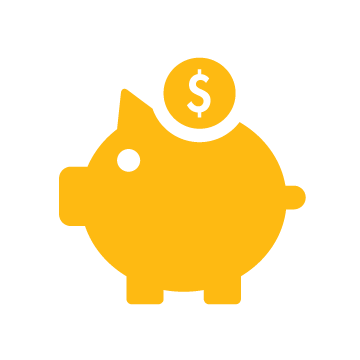 If you are a self-funded business who does not rely on any external funding past a ‘family and friends’ round, your targets will be around acquisition and active user growth, not necessarily revenue.
If you are a self-funded business who does not rely on any external funding past a ‘family and friends’ round, your targets will be around acquisition and active user growth, not necessarily revenue. 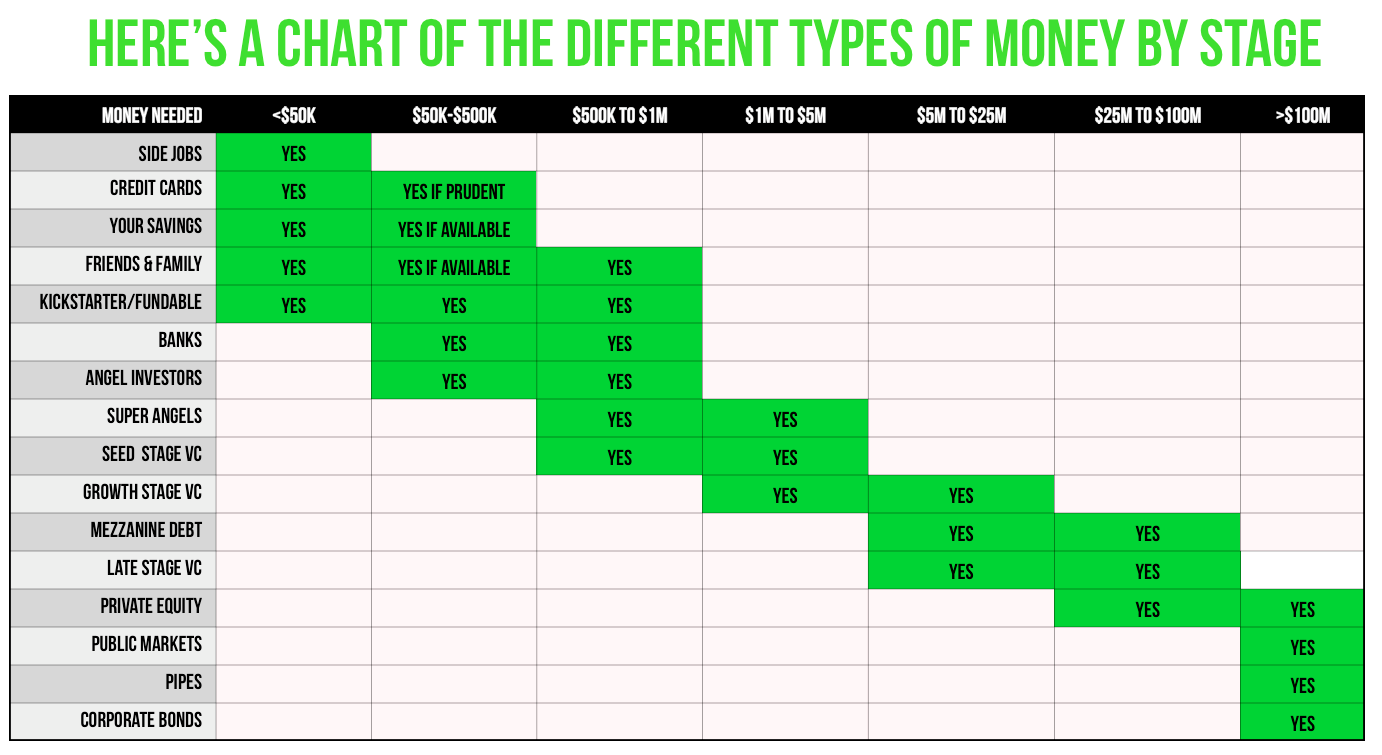 Revenue is of course important (you’re probably not doing this for charity!), but you can afford to focus on growth if you don’t have to impress investors with how much cold hard cash you have coming in.
Revenue is of course important (you’re probably not doing this for charity!), but you can afford to focus on growth if you don’t have to impress investors with how much cold hard cash you have coming in.
Monetisation models are a commodity now – there are hundreds of ‘off the shelf’ options to choose from, from freemium to paid advertising to sponsorship to subscription models.
Many apps being released today are blending multiple monetisation models to tailor them to their app’s existing funnels and customer behaviours.
“Stop asking how businesses will make money. The answers are obvious”. – Andrew Chen
Alright, now that we’ve established whether you can afford to be a ‘growth first, revenue later’ startup, let’s look at your new idol, Pinterest.
Why Pinterest chose growth over revenue
Pinterest found it difficult to raise funds when the site first launched in June 2010.
In many ways it was the opposite of what was hot in Silicon Valley at the time.
Facebook and Twitter were going gangbusters using real time, text-based updates between friends, while Pinterest used images and updates were less time sensitive.
To add insult to injury, two of the co-founders were non-technical, and they only had 3,000 users after 3 months in operation.
Not exactly the kind of product that will make Silicon Valley ‘sharks’ go into a feeding frenzy.
So, what Silbermann and his co-founders did was focus on building Pinterest’s userbase and connecting with users.
They found courage in the fact that their 3,000 users actually loved the product and were highly engaged.
“We didn’t have an engineering problem. We had a design and community problem.” – Ben Silbermann, Pinterest Founder
By turning all their efforts to optimizing the product and turbocharging its marketing efforts, Pinterest started showing 50% month-on-month growth, scaling to the 100 million users it has today.
Finally, investors started to take notice!
Pinterest raised $762 million in the 4 years after its launch, with experts valuing it at $3.8 billion in June 2014.
5 Growth Hacks Pinterest Used To Soar To A $3.8B Valuation Without Producing Any Revenue
Of course, today, Pinterest does have a monetisation model in the form of Promoted Pins and Promoted Places, which allows brands to pay to have their pins be featured on targeted users’ boards. Its latest valuation is $11 billion. But what did Pinterest do in those 4 years before they rolled out Promoted Pins, if they weren’t trying to make revenue? They threw all their energy into the following targets:
- Increasing unique visitors and overall website traffic
- Increasing new signups
- Improving user engagement with the product itself
In other words, they focused on metrics that would boost growth in active users, brand awareness and customer lifetime value. Here are the growth hacks they used to make it all happen.
-
Old fashioned meet-ups with users
Pretty unusual for a web company, but Pinterest knew the best place to start was by taking their most loyal, ‘power’ users and turning them into screaming brand evangelists.
They contacted their existing users and held meet ups at local boutiques to get first hand user feedback and to create buzz around the brand.
See also: How To Build A Viral App: Lessons From Candy Crush
This was quite a labour-intensive acquisition method, but is the kind of organic, low cost marketing that has enormous potential when executed well.
The co-founders quickly reaped huge rewards from this strategy.
They found that many of their customers used Pinterest exclusively for their favourite hobby.
In its early days, arts and crafts dominated Pinterest!
If they could engage 1 member of a neighbourhood knitting club, they could quickly get a whole suburb using Pinterest through word of mouth alone.
Key takeaways from this growth hack
If you’ve hit a ceiling in your userbase growth, focus on your power users and what characteristics (demographic, behavioural, etc) they share. Then pour your resources into attracting more users who have those same high-potential characteristics. Doing hyper local marketing is a tactic used by many now global apps in their early days, including Snapchat, Tinder and Uber. See also: How Angry Birds, Uber And Other Viral Apps Got Their First 10,000 Users
2. Using scarcity
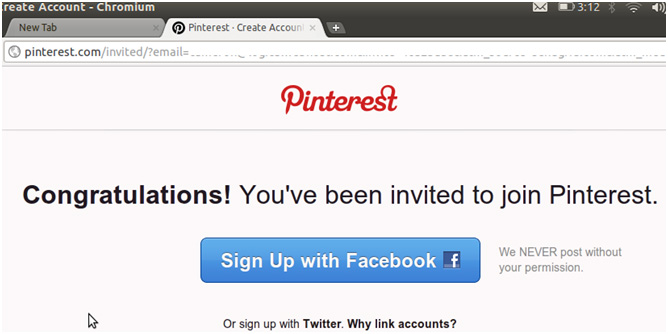 Now that Pinterest was drawing quite a lot of traffic to their site from their organic marketing campaigns, they focused their attention on increasing signups.
Now that Pinterest was drawing quite a lot of traffic to their site from their organic marketing campaigns, they focused their attention on increasing signups.
Pinterest’s signup process is credited with drawing in their early adopters.
At the time, Pinterest was an invite-only site.
Users who wanted to join had to go to website and request an invitation, which would be sent to their email a few days later.
This psychological selling tactic made Pinterest feel less like just another social network, and more like an exclusive, premium club.
Here’s what the ‘request an invite’ button looked like to a new visitor: 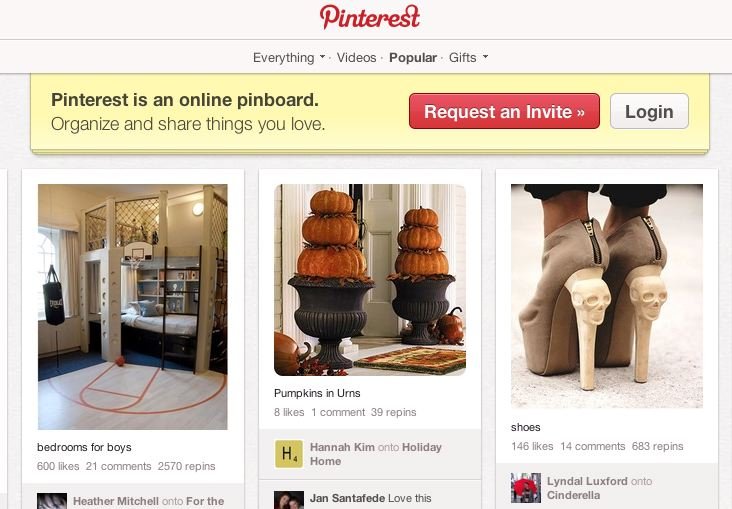 And here’s the foll0w up email a new signup would receive inviting them to join Pinterest:
And here’s the foll0w up email a new signup would receive inviting them to join Pinterest: 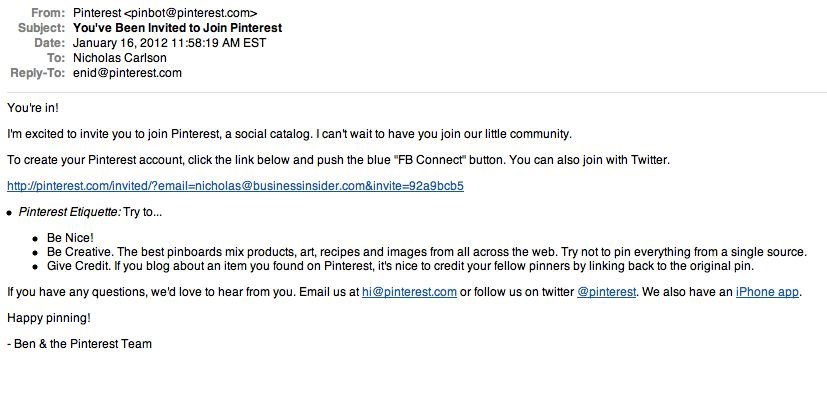 It certainly turned a lot of heads, because from August 2010 to October 2013, Pinterest grew from 100,000 users to over 70 million.
It certainly turned a lot of heads, because from August 2010 to October 2013, Pinterest grew from 100,000 users to over 70 million.
Key takeaways from this growth hack
Copying this signup process wouldn’t work for all app verticals, unfortunately.
The reason Pinterest had so much success with it was because it fit perfectly with their ‘exclusive’ branding.
Most apps will find that the longer it takes a new visitor to complete the signup process, the higher the drop off rate.
However, you should be constantly testing your onboarding process and signup funnels to see what gets more signups.
You may find that adding the Facebook login option gets more signups, or perhaps eliminating an input field like ‘address’ increases conversions.
Alternatively, having no signup process at all can be really effective at getting users into the app!
3. Leveraging key influencers
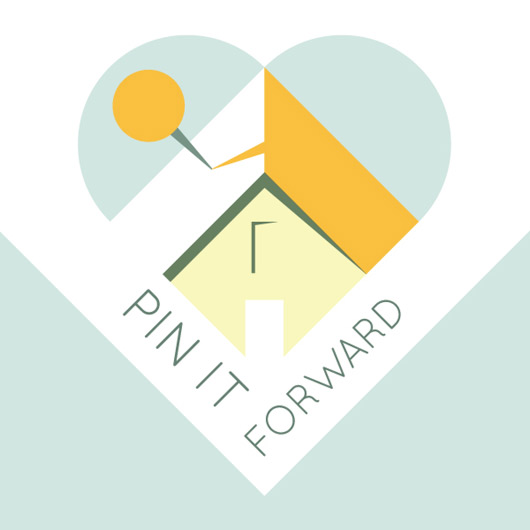 Pinterest got new visitors and traffic to the site by reaching out to influential bloggers in different niches.
Pinterest got new visitors and traffic to the site by reaching out to influential bloggers in different niches.
These bloggers were the launch pad for the ‘Pin It Forward’ campaign.
Bloggers each created their own board based on a wider theme, accompanied by a blog post which would link to other bloggers boards on the same theme.
Bloggers were also given power to hand out a certain number of invites to Pinterest to their readers and friends, encouraging them to create their own boards in a constant viral loop.
One key fashion blogger, SF Girl By Bay, launched the campaign, and Pinterest finally seemed like it was taking off. 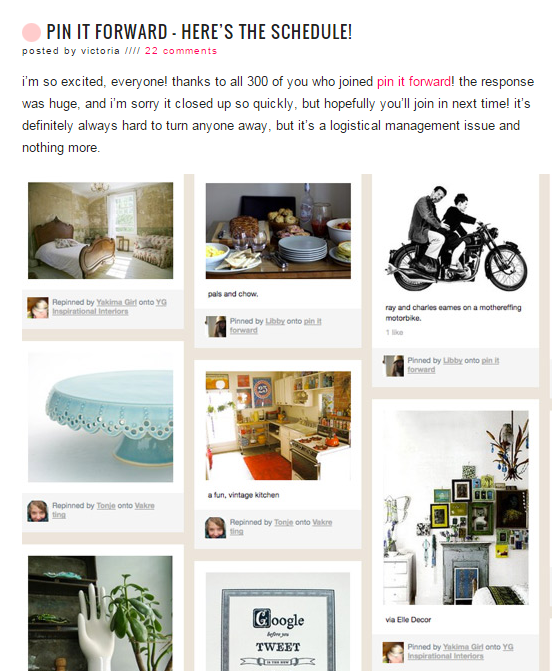 Pinterest has rebooted the Pin It Forward campaign a few times since, most recently in the UK in 2013.
Pinterest has rebooted the Pin It Forward campaign a few times since, most recently in the UK in 2013.
Key takeaways from this growth hack
Bloggers have enormous influencer potential over their audiences, particularly millennials.
Identify who has most influence among your target market, your industry and your existing network, and reach out to them.
See also: How To Get Key Influencers To Rave About Your App
This doesn’t just apply to individuals: An influencer might be a magazine that your target market reads or an event they frequently attend.
A personal endorsement from someone your target market looks up to serves as great social proof!
4. Don’t forget about the product
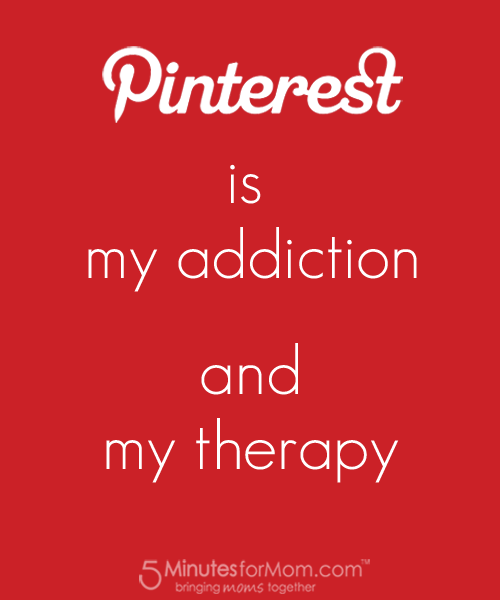 Pinterest boasts impressive engagement and retention levels, and that comes from an early focus on building the most customer-focused product they could.
Pinterest boasts impressive engagement and retention levels, and that comes from an early focus on building the most customer-focused product they could.
See also: Key Features Of A Successful Tech Product
The major drawcard of Pinterest itself is its seamless user interface.
Pinterest is designed so users have the flexibility to use quite a lot of features, but can grab them easily.
A user can perform pretty much every function from the 1 page – commenting, liking, pinning, re-pinning or following a friend.
It only takes 1 more click to open up a pin and follow that author.
This makes navigating around the app quicker and encourages the user to complete a greater number of actions in a session.
And in turn, more actions = more engagement = more new traffic and signups.
A problem most apps experience is the amount of time it takes a user to complete the funnel is too long, uses too many screens and their drop off rate is way too high.
Infinite scroll  The other crucial component of Pinterest’s user interface is the infinite scroll.
The other crucial component of Pinterest’s user interface is the infinite scroll.
Users can never reach the bottom of their newsfeed because more pins just autoload.
It’s no wonder that Pinterest’s average session duration is a whopping 14 minutes!
The effect on retention
The only way to ensure that your customers are sticking around in your app is to make the experience of using the app so addictive and valuable, they can’t imagine ever leaving.
This is the effect that Pinterest has on its users.
It might not have as many people using it at any one time as Facebook or Instagram, but their retention rates are nothing short of inspiring!
I’m being such an app nerd here, not even ashamed.
84% of women on Pinterest are still pinning in their 4th year of signing up! 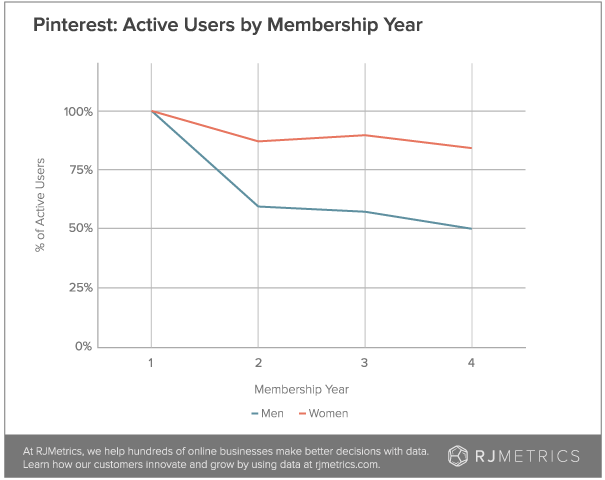 Even more incredible, women actually get more active as the years go by, increasing the quantity of pins each year.
Even more incredible, women actually get more active as the years go by, increasing the quantity of pins each year. 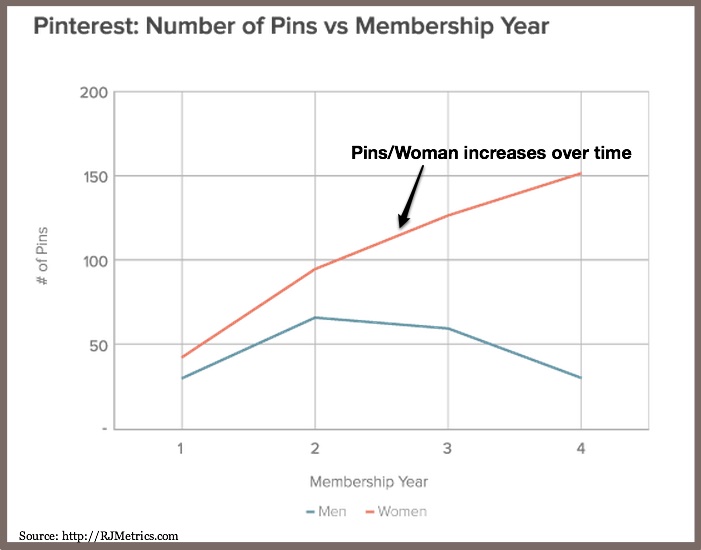 And when 80% of your user base are women, that’s powerful engagement levels. That’s a lot of time that people are using your product, referring their friends, and so on.
And when 80% of your user base are women, that’s powerful engagement levels. That’s a lot of time that people are using your product, referring their friends, and so on.
Key takeaways from this growth hack
It doesn’t matter how ground breaking your marketing is or which celebrity you have endorsing you, if your app is rubbish you’ll lose all the customers you fought to win.
Startups should be constantly monitoring user behaviour with app analytics to identify where their product can be improved.
Optimise your funnels and screens, fix bugs quickly, update your app regularly, keep content fresh and tailored as much as possible to the unique user.
See also: 6 Hot Tips For Designing A Magnificent User Experience
5. Facebook and Twitter integration
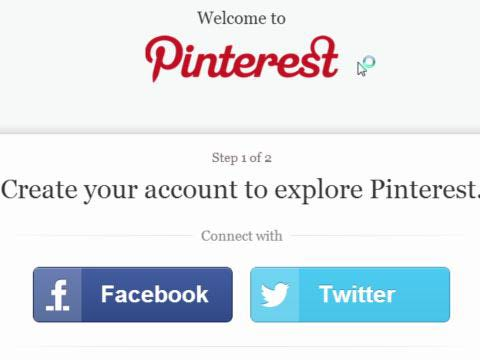 Pinterest relies on the ‘network effect’ for users to get any value out of it, just like Facebook or Snapchat.
Pinterest relies on the ‘network effect’ for users to get any value out of it, just like Facebook or Snapchat.
This effect describes how the more users you acquire in one niche or geographical area, the more valuable your app becomes, leading to more downloads and engagement.
This is why the customer onboarding process was crucial for Pinterest to avoid the ‘cold start’ problem many apps face:
New signup, no relevant content to show them.
If it was a user’s first time on Pinterest, they would be prompted to sign up with Facebook or Twitter and be suggested to follow other users based on this valuable data.
This makes the first crucial app session more valuable, reducing the likelihood of losing a customer early in their lifecycle.
Key takeaways from this growth hack
We’re living in a time where our devices are more connected than ever before.
Consumers are expecting your app to fit with their lives, not the other way round.
To increase frequency of use, consider integrating your app with other devices and platforms (and ensure this integration is seamless!).
This strategy also extends your reach to as many new users as possible.
You’ll reach a potential new base of users on Twitter who aren’t on Instagram, for example.
See also: How To Use Facebook To Increase App Downloads
BONUS: Pinterest Revenue Hack – Collecting user data to gain monetisation insights
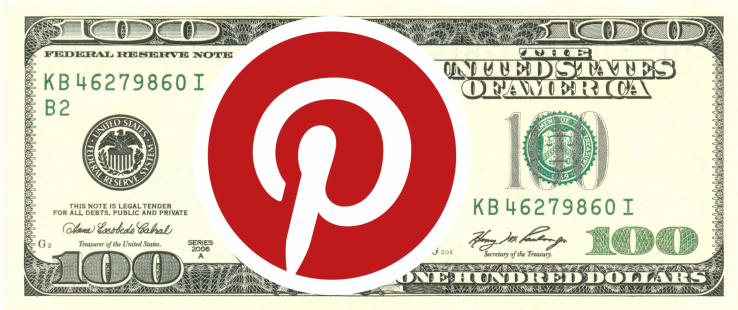 You never really know ahead of time how users will react to your monetisation method.
You never really know ahead of time how users will react to your monetisation method.
It’s an assumption that users will pay a certain price for a premium feature, or will click on a banner ad, for example.
But if you already have data on your users’ app behaviour, you can much more effectively predict what advertising form they’ll respond best to, and which will be least disruptive to the user experience.
See also: How To Gain Actionable Insights from the top 5 app metrics
And that’s exactly what Pinterest did! They used data from their 72 million active users to craft their own tailored monetisation model.
In 2012, Pinterest was able to confirm that:
- Users who click through to a brand’s external website are 10% more likely to buy than those sent from other social media sites.
- Pinterest users spend more money, more often, than any of the other social media sites.
- Pinterest is the third largest source of referral traffic on the entire Web.
- People use Pinterest with intent to browse and discover (great for brand awareness) as well as intent to purchase (great for brand sales)
Clearly, Pinterest could see that their most powerful monetisation method was going to be sponsorship.
The data showed it was a win win: Brands benefit from getting their products in front of more people in their target market, and users get to discover new content relevant to their interests.
2/3rds of Pinterest’s 50 billion pins are from brands and businesses, so rolling out Promoted Pins wasn’t actually disruptive to the user experience at all.
Promoted Pins is still in early days, but Pinterest is forecasting $169 million in annual revenue this year.
We also know that Promoted Pins are getting a lot of clicks relative to Facebook and Twitter.
Pinterest may not have the reach that the other social networks do (sorry, I know it’s not a social network), but the intent to purchase is huge. Pinterest is a shopper’s paradise.
Wrapping up
Pinterest shows us that for startups who aren’t completely reliant on early-stage investment, the ‘growth first, revenue later’ mentality can be a pretty lucrative one down the track.
But don’t think this is the easy route! Building up your userbase is hard and you will be spending money.
Most of your budget after development will go into acquisition channels.
If you’re not going to focus on increasing revenue, focus on:
- Building an exemplary team that will be crucial to hitting your growth targets
- Getting product/market fit right
- Growing in your initial market and then knowing the appropriate tactics and channels to scale
Apply Pinterest’s growth hacks to your own startup and you’ll have a massive userbase of customers who love your app and will stick around when you finally roll out your tailored monetisation model.
Get famous now, get rich later.
Latest posts by Logan Merrick (see all)
- Ep 18: Collective Campus’ CEO on Intrapreneurship and Corporate Innovation - December 20, 2016
- 50 User Engagement Strategies For Planning Memorable Mobile Experiences - December 19, 2016
- Latest Data: App Monetisation Trends And Drivers 2015-2020 - November 25, 2016

